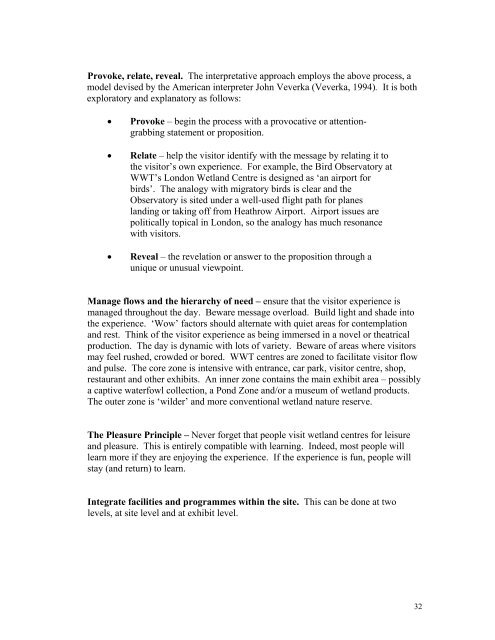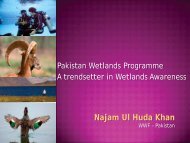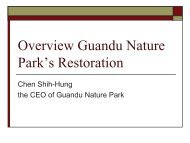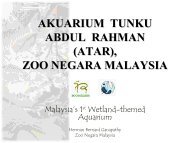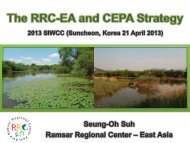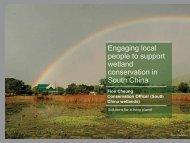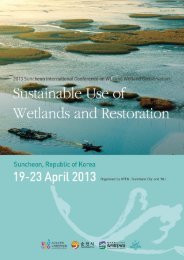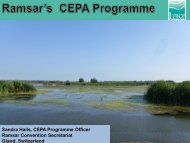developing a wetland centre, English - Wetland Link International
developing a wetland centre, English - Wetland Link International
developing a wetland centre, English - Wetland Link International
Create successful ePaper yourself
Turn your PDF publications into a flip-book with our unique Google optimized e-Paper software.
Provoke, relate, reveal. The interpretative approach employs the above process, amodel devised by the American interpreter John Veverka (Veverka, 1994). It is bothexploratory and explanatory as follows:• Provoke – begin the process with a provocative or attentiongrabbingstatement or proposition.• Relate – help the visitor identify with the message by relating it tothe visitor’s own experience. For example, the Bird Observatory atWWT’s London <strong>Wetland</strong> Centre is designed as ‘an airport forbirds’. The analogy with migratory birds is clear and theObservatory is sited under a well-used flight path for planeslanding or taking off from Heathrow Airport. Airport issues arepolitically topical in London, so the analogy has much resonancewith visitors.• Reveal – the revelation or answer to the proposition through aunique or unusual viewpoint.Manage flows and the hierarchy of need – ensure that the visitor experience ismanaged throughout the day. Beware message overload. Build light and shade intothe experience. ‘Wow’ factors should alternate with quiet areas for contemplationand rest. Think of the visitor experience as being immersed in a novel or theatricalproduction. The day is dynamic with lots of variety. Beware of areas where visitorsmay feel rushed, crowded or bored. WWT <strong>centre</strong>s are zoned to facilitate visitor flowand pulse. The core zone is intensive with entrance, car park, visitor <strong>centre</strong>, shop,restaurant and other exhibits. An inner zone contains the main exhibit area – possiblya captive waterfowl collection, a Pond Zone and/or a museum of <strong>wetland</strong> products.The outer zone is ‘wilder’ and more conventional <strong>wetland</strong> nature reserve.The Pleasure Principle – Never forget that people visit <strong>wetland</strong> <strong>centre</strong>s for leisureand pleasure. This is entirely compatible with learning. Indeed, most people willlearn more if they are enjoying the experience. If the experience is fun, people willstay (and return) to learn.Integrate facilities and programmes within the site. This can be done at twolevels, at site level and at exhibit level.32


